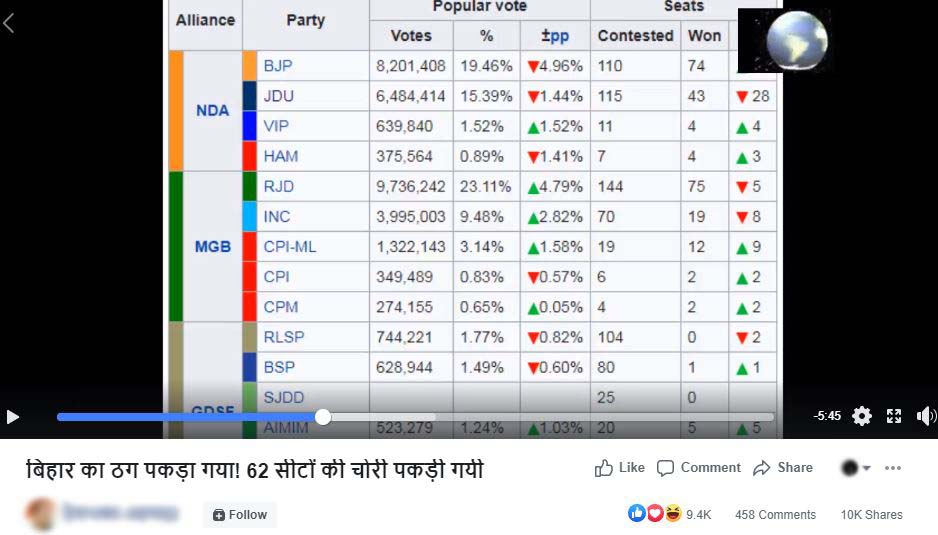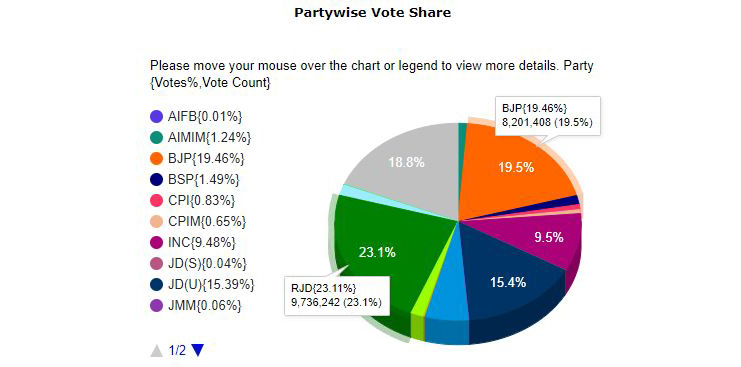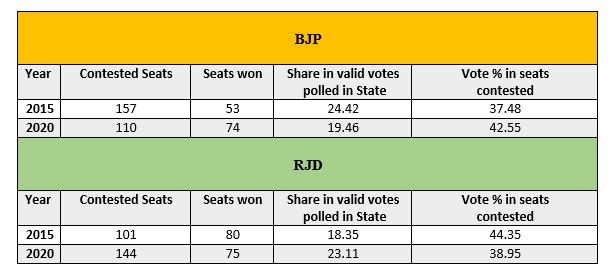A video is being shared widely on social media with a claim that it shows the proof of EVM tampering by the Bharatiya Janata Party (BJP) in the recent Bihar Assembly Elections – 2020. In the video, the person says that the BJP has less vote share in the recent elections than the previous election but won more seats, whereas the Rashtriya Janata Dal (RJD) has more vote share in the recent elections than the previous election but won fewer seats. It is being claimed that the reason for the above phenomenon is EVM tampering by the BJP. Let’s fact-check the claim made in the post.

Claim: Video explaining the proof of EVM tampering by the BJP in the Bihar Assembly Elections – 2020.
Fact: One cannot conclude that there have been discrepancies in the EVMs by just analyzing the vote share and the number of seats won. There are many factors which impact the vote share and seats won by a political party in the elections. The less vote share of BJP might be due to contesting in fewer seats in 2020 compared to 2015, and the BJP might have won more seats due to high ‘vote % in seats contested’ in 2020 compared to 2015. The same applies to the RJD’s performance. Hence the claim made in the post is MISLEADING.
From the Election Commission of India website, we found that the vote share and seats won data given in the posted video is correct. But let’s check whether the reasoning provided to conclude the EVM tampering is valid or not.

There are many factors which impact the vote share and seats won by a political party in the elections. In most cases, one can generally see that the total vote share (i.e. share in valid votes polled in State) increases with the increase in the number of contested seats. While BJP has contested in 157 seats in the 2015 elections and won 53 seats with 24.4 per cent total vote share, it contested in 110 seats in the 2020 elections and won 74 seats with 19.4 per cent total vote share. In 2015, RJD has contested in 101 seats and won 80 seats with 18.3 per cent total vote share whereas it has contested in 144 seats and won 75 with 23.1 per cent total vote share in 2020.

In the posted video, it is being questioned that how BJP can win more seats in 2020 with less vote share than in 2015. As discussed above, the decrease in the vote share for BJP in 2020 might be due to contesting in fewer seats than in 2015. Also, the answer to that question may be found in the ‘vote % in seats contested’. In the table, it can be seen that the ‘vote % in seats contested’ for BJP increased from 37.4 in 2015 to 42.5 in 2020. So, in reality, BJP’s vote share increased in 2020 if only the votes polled in the seats it contested are considered. The same applies to the RJD. The increase in vote share of RJD might be due to the increase in the number of contested seats and the decrease in the seats won might be due to less ‘vote % in seats contested’ in 2020 compared to 2015.
Considering just less or more vote share, one cannot determine the proportion of seats one can win. In the first-past-the-post system, in some seats where there are more contestants, one can win with fewer votes whereas, in seats with few contestants, one can get more votes. The aggregate vote share is a combination of all such varying seats.
To sum it up, just with the vote share and the number of seats won, one cannot conclude that there have been discrepancies in the EVMs.


